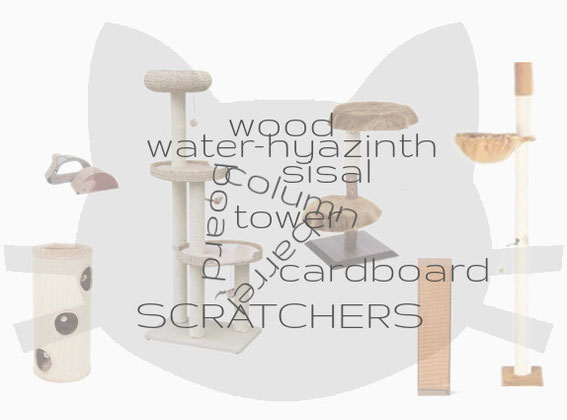
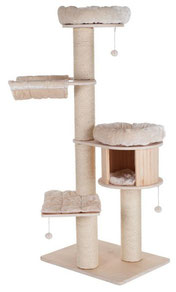
-
Sisal scratching posts
The most common and economics. Sisal is a natural fiber from the agave plant. Also used for ropes and ship ropes and carpet manufacturing. It is very robust and resistant.
The columns of sisal scrapers are hard cardboard tubes, covered with sisal rope and attached one to another by threaded rods. Other elements are usually upholstered in plush.
There's a great variety of models, sizes and colors in a wide range of prices and quality. The cheaper models are often poorly finished and have a shorter lifespan.
Beware of the very cheap, usually from Asia - they can carry toxics.
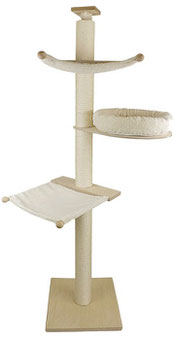
-
Scratching posts of natural wood
More expensive than sisal are also heavier and more stable, ideal for large and heavy cats.
They come manufactured in series or individually handcrafted, with trunks and branches of trees with natural bark. In Europe there are over twenty workshops that offer such trees.
Note
If you have now feel like making one yourself, using (parts of) a tree, please keep in mind that wood must dry 1 year before working it, to prevent parasites and woodworms and you should avoid toxic trees or those treated with pesticides.

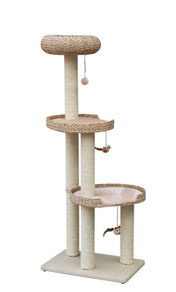
-
Banana Leaf and Water Hyazinth scratching posts
Banana Leaf and water hyacinth scratching posts are a luxury class between scratching posts and eye catching objects. Columns can be of hard cardboard or wood with sisal and items made of banana leaves or plaited water hyacinth. Some cats love to chew on them and while scratch insistently, leaving traces in the natural material. They are breathable and therefore very nice for summer.
Other elements for scratching
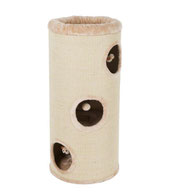
- Barrels
Compact and very stable cat furniture. They consist of several caves and a higher platform. Sisal upholstery offers plenty of scratching space. They are a good alternative if there is really no room for a scratching tower, although they can't completely replace them.
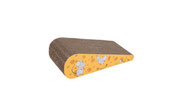
- Scratchers from cardboard
Cardboard is economic and ecological. And cats love them! - although logically they don't last as long as other scratching elements.

-
Scratching boards and pads
Can serve as complements to be placed in areas where the cat likes to scratch or to accustom kittens to use a scratching post. They are inexpensive, light and easy to carry and change place.
Assembling and care
Normally, especially larger models come unassembled. When assembling them you should follow the manufacturer's instructions regarding the location of the different modules or you can seriously compromise their stability and security.
It is advisable to assemble carefully, fix and double check the connection elements and the armed structure. In case of doubt, it'll be better best to fix it by an angle to a wall to secure it.
For cleaning, vacuuming and / or passing a damp cloth is enough. If it got especially soiled (eg vomiting) use an (almost) odourless product or you risk that your cat shuns the place. Micro-biological cleaners go well.
Related posts
Why does my cat need a scratching post
The Scratching Post - Choice, elements and location
My cat doesn't use the (new) scratching post .. What can I do?
